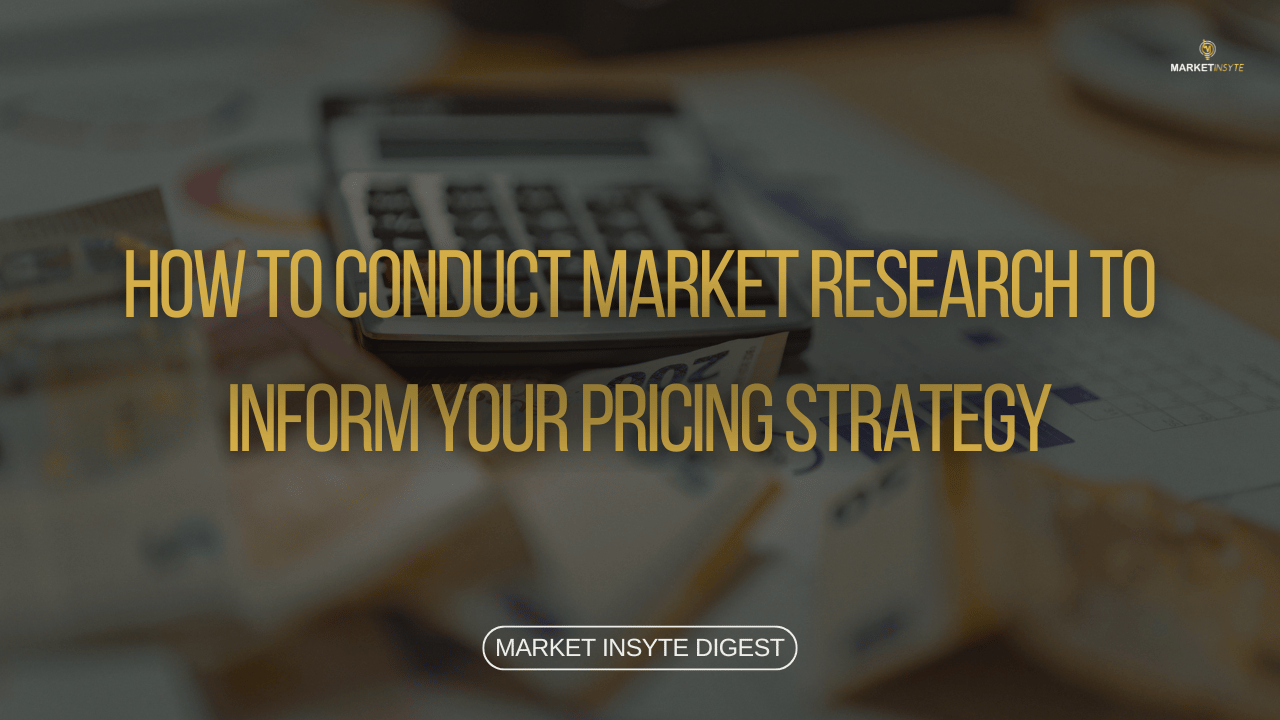Executive Summary
Pricing is also about aligning with customer expectations and perceived value.
Market research helps you understand what your target customers are willing to pay and how they compare alternatives.
Effective pricing research involves a combination of competitor analysis, customer surveys, interviews, and value perception studies.
Testing price points and gathering feedback allows you to refine your pricing based on real-world responses.
Data-driven pricing helps improve sales, increase profitability, and position your brand effectively.
Pricing is one of the most important decisions an entrepreneur will make—but it’s also one of the trickiest. Set your price too high, and you risk scaring customers away. Set it too low, and you might undervalue your offering or hurt your margins. That’s where market research becomes invaluable. By taking the time to understand your market, your competitors, and your customers, you can set a price that reflects both value and strategy. This article will guide you through how to conduct market research that informs your pricing decisions with confidence.
Understand What Your Customers Value
The starting point for pricing research is understanding your customer’s perspective. What do they care about most—convenience, affordability, quality, status, or something else? You’ll need to go beyond demographics and dig into their motivations, pain points, and buying behaviour. Through interviews and surveys, ask questions like:
“What is a fair price for a product like this?”
“Which factors influence your decision to buy or not buy?”
“Have you purchased something similar before, and what did you pay?”
These responses will help you gauge price sensitivity and what customers are actually willing to spend based on the value they perceive in your offering.
Analyse Your Competitors
One of the most straightforward forms of pricing research is competitive analysis. Study how similar products or services are priced in your market. Identify at least 5–10 competitors and take note of their price points, positioning (e.g., premium, budget, mid-range), and any added value they offer, such as warranties, faster delivery, or support. This will give you a sense of the pricing “range” in your category and where you might fit in. It’s not about copying your competitors, but understanding where your product sits in relation to theirs and how you can justify your price through differentiation.
Conduct Price Testing
If you’re launching a new product or testing a new pricing model, you can use methods like A/B testing or pricing surveys to gather real-world feedback. For example, present different groups of customers with different price options and measure their responses. Alternatively, offer tiered pricing (e.g., basic, standard, premium) and see which package most customers choose. This approach helps you understand how your pricing impacts conversions and what customers are willing to trade off for additional features or benefits.
Use Willingness-to-Pay Techniques
Advanced research methods, such as the Van Westendorp Price Sensitivity Meter, can be useful in determining the optimal price range. This involves asking customers four key questions:
At what price is the product so cheap that you’d question its quality?
At what price is it a bargain?
At what price is it getting expensive?
At what price is it too expensive to consider?
By analysing these responses, you can identify a pricing sweet spot that aligns with your customers’ perceptions of value.
Apply Insights to Set a Strategic Price
Once you've gathered and analysed your findings, use the insights to choose a pricing strategy. Will you go for a value-based pricing model where you charge based on perceived benefit? Or a competitive pricing approach, where you position your offer in relation to others? Your research should reveal not only what customers are willing to pay, but also what they expect to receive at that price, helping you deliver on that promise and justify your price confidently.
Pricing doesn’t have to be a guessing game. With the right market research, you can uncover the information you need to set a price that customers are willing to pay—and one that supports the growth of your business. A thoughtful pricing strategy, backed by data and customer insight, helps you attract buyers, build trust, and improve your bottom line.
How can we help you?

Market Insyte offers personalised market research services tailored to entrepreneurs' needs.
If you would like to schedule a business model consultation, feel free to book a session here
If you would like us to conduct a personalised market research study, feel free to schedule a complimentary discovery call
Browse our public market research library

